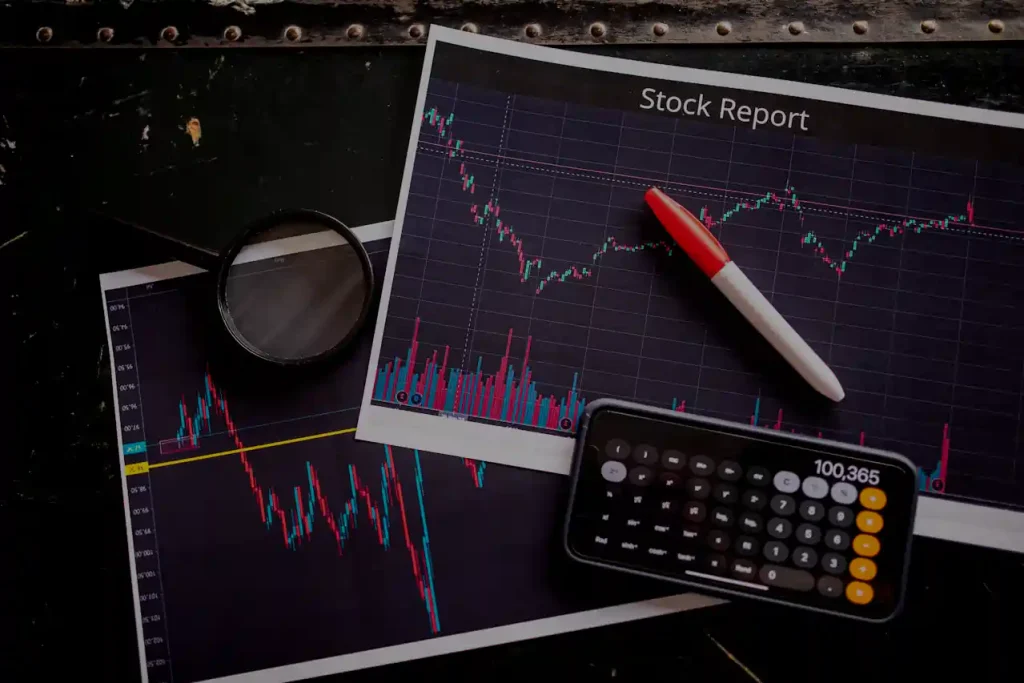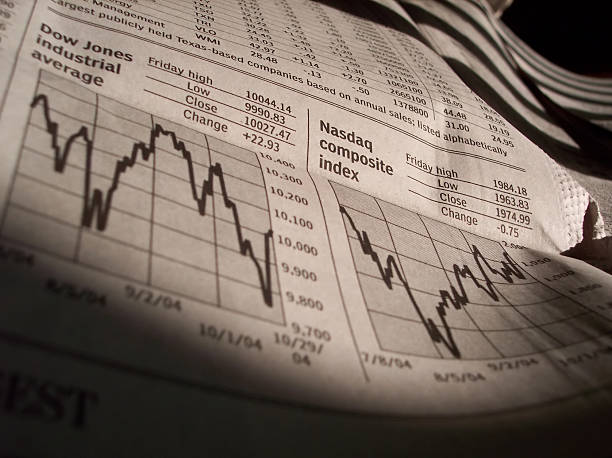Table of Contents
What are Stocks and Shares ISAs
How many Stocks and Shares isas can I have? Ok before we get into dehttps://www.hsbc.co.uk/investments/what-is-a-stocks-and-shares-isa/tail let’s start to know Stocks and Shares ISA is a type of Investment Account the helps individuals save taxes on investments and provide avenues to make more wealth. Unlike regular savings accounts, these ISAs enable you to invest in most types of securities like stocks, bonds, mutual funds, and ETFs.
All the income, both dividends and capital gains, are tax exempted. That is why Stocks and Shares ISAs can be considered a good option for long-term investment with a higher yield, free from taxes. Lith is most helpful for an investor intending to develop a diverse investment portfolio as well as for individuals who need to achieve certain financial objectives, such as purchasing a home, financing education, or planning for retirement.
To begin investing, you must consider what provider you want to go with; which could be a bank or an online investment service, then decide on what you want to invest your money in and how much risk you are willing to take. It important to note that most of these investment opportunities come with risk factors of different magnitude.
In the trade of stocks, the potential of getting high returns is potentially coupled with risk in the occurrence of fluctuations in the market price whereas bonds while they are more secure their returns are comparatively lower. It is therefore necessary to obtain these insights so as to be on the right footing in the”stocks and shares ISAs” probability so as to enjoy the every growing returns in future.
The Rules of Stocks and Shares ISAs
ISAs are not without rules governing their usage especially Stocks and Shares ISAs as those investing in it will want to enjoy tax-free status. However, to open this type of ISA you must be a UK resident and you must be at least 18 years old. There is a lot of focus on the fact that it is an individual account which cannot be operated jointly with somebody else, say, a husband or a wife. Also, the money you use to fund needs to be earnings on which taxes have been paid in advance.
For all the ISAs put together, there is a fixed contribution allowance for each tax year. At this time, for the 2024/2025 tax year the allowance is £ 20,000. This means you can invest the whole amount in a Stocks and Shares ISA or split it between other types of ISA, including Cash ISA or Lifetime ISA. In a case that one contributes more than this limit, there are penalties attached, thus you need to closely monitor your contribution. In addition, it is only possible to invest in one Stocks and Shares ISA in any given tax year from a single provider. Initially, this makes compliance with the HMRC regulations easy while at the same time protecting your ‘tax free’ status.
Are You Allowed to Open Multiple Stocks and Shares ISAs?
It is possible to have and manage several Stocks and Shares ISAs at once across the different tax years, but at any single tax year, you are only allowed to invest in one Stocks and Shares ISA. It is intended to be a simpler system for everyone to use and follow for the persons interested in investing and the regulating organizations. But what it indicates is that in respect of investment, you have no freedom to move around.’ Thus, ISAs from prior years enable you to diversify investments while strictly following the rule of one-year contribution.
For instance, you invested in a Stocks and Shares ISA in 2023 and another one in 2024, you can still operate both of them at the same time. However, in the tax year 2024/2025, you may only contribute new money to only one of them. This is because it enables you to make alteration, the providers’ services, fees and the investments at different times so that they can coincide with your set goals.
Stocks and Shares Individual Savings Account which is abbreviated as ISA Annual Allowance
ISM allowance is the key component in the Stocks and Shares ISA system and can be annually provided. For the current tax year, the limit is £20,000. This is an overall limit for all types of ISAs together, so if you pay £5,000 into a Cash ISA you can only put £15,000 into a Stocks and Shares ISA. It is a going-concern expense that is credited daily at a rate of £185,000 and recalculates every year on April 6 that is the start of a new fiscal year.
EOY allowances cannot be rolled over to the next year; therefore, don’t just contribute haphazardly based on your current need or for unused allowances. For this benefit to be maximized it is advisable to open a regular savings plan that can be facilitated through monthly deposit rather than a onetime deposit. This concept is known as pound-cost averaging, and it can really help decrease the effects of fluctuations while giving you the best returns from your budget.
Is it possible to transfer money between two ISAs?
Stocks and shares ISA has an added benefit in that an individual is allowed to transfer his/her money in ISAs easily. If you want to change your providers for better service provision or to group your accounts together, the exercise is easy. Transfers are not considered to be part of your annual ISA allowance so long as they are completed correctly.
To transfer funds, you have to contact your current and your new ISA providers and complete a transfer form. Do not transfer money to another account because you want to withdraw money, because you risk losing your tax-free advantages. Furthermore, one should not overlook the fact concerning the penalties such as exit fees that might be in force with the current service provider. Knowledge of these terms will keep you free from unpleasant surprises and will help to avoid problems with further work.
Advantages of having Stocks and Shares ISA
Stocks and Shares ISAs have several advantages to make them useful for any investor. The first is a tax advantage they bring to the table. Dividends and capital gains for any stock are taxation free with both regarded as tax free income. It enables your invested capital to earn more than ordinary investment vehicles held in taxable accounts.

Yet another outstanding advantage is the capacity for boosted revenues. To contrast, Cash ISAs comes with predetermined interest rates, while Stocks and Shares ISAs can allow you to invest in stocks and shares, bonds, and other types of property that offer you some level of return. Such flexibility means that you can invest to suit your risk tolerance and coming financial needs. However, these ISAS allow you to make investment portfolio more balanced, and minimize risks connected with fluctuations on stock exchanges.
Possible Downsides of the Investments under the Stocks and Shares ISA
To be specific, although Stocks and Shares ISAs are helpful, they are not without their drawbacks. A major threat is market risk. Unlike Cash ISAs investment value is changeable, the success of investment is unreliable and there is no guarantee of getting back more than you invested. This makes them a no go zone for those who cannot stomach risk or are expecting fixed and certain rates of returns.
The other weakness is that there are certain fees required in management of such accounts. Common examples of costs include charges made against accounts maintenance, funds management, and the frequency of transactions among others. He pointed out that over an extended period of time all these costs can cut into your profits, especially if you invest small amounts of money.The costs involved include: Lastly, the aforementioned £20000 per year might be not enough for those HNWIs who are planning to invest more than this amount of money without paying taxes. It is important to be aware of the limitations while using it so that any decisions that are made involve least risk of these disadvantages happening.
The Strategies of Concurrent ISAs Management
Multi-ISA management can be challenging if not well coordinated and well planned for. First of all, list all accounts created, with the date of their creation, the providers, and the yearly deposits. This means that you do not violate any rules so that you are not penalized.
The other strategy is diversification. When you invest through the ISA types like stocks and shares, cash or innovative finance, you are able at clear the risk as well as the reward. Also, try to combine multiple older ISAs with the same provider, in order to save time and money on fees. Engagement with portfolio and changing positions in accordance with the market and personal aim is one of the most crucial strategies for increasing the rate of returns.
Common Misconceptions Again: Stocks and Shares ISAs
HLI: Equities and Share Individual Savings Account or Stocks and Shares ISAs are poorly understood resulting in forgone opportunities or unwise choices. It is however not true that they are only suitable for the established investor in the market. In fact, these accounts are accessible to all those people who want to increase their passive income, but do not necessarily need to invest.
The final myth is that Stocks and Shares ISAs are too risky. They do contain market risk but the probability of prospecting for better returns in future normally offsets this problem. Also, most people have the impression that these ISAs are reserved for only the affluent persons. Nevertheless, thanks to the absence of minimum deposit thresholds from some of the providers, those are available to the general public. As we rid society of these misconceptions, we hear more people turning to this tax efficient tool investment instrument.
Ways through which you can get the most from an ISA.
Getting the best out of your Stocks and Shares ISA entails both anticipating what is possible and actually doing something about it. It is wise to exhaust your annual contribution allowance in order to allow for tax-free growth. In case you can’t invest up to maximum amount at once, consider an automatic investment plan that invests a regular amount from your monthly earnings.
To make a portfolio less risky choose a combination of stocks, bonds and exchange traded funds. Also, select low cost funds given that they incur low fees while enabling investors to earn more income. This means that, it is important to make periodic checks of the investment and the performance in relation to the market and the objectives on financial planning. Consulting a financial planner is also beneficial to help you fine – tune your plans and gain better results.
Conclusion: Building a Debt-Free Future
Stocks and Shares ISAs are a great way of creating wealth over the long-term and being debt-free. It is important that the rules, advantages and even the disadvantages and the limitations are understood so as to fully capitalise on these accounts. It does not matter if you are a professional or are new to investing, Stocks and Shares ISA can be one of the great corner stones of your financial planning and work towards your goals while providing tax efficient growth.
FAQs
Do I have to bind myself in something when investing my Stocks and Shares ISA too?
No, you are free to withdraw your Invested amount at any time. However, one should know that withdrawals cannot be made up within the same tax year without giving up some of your established allowance.
Which short-term financial needs can be met by investing in Stocks and Shares ISAs?
In general, these ISAs are long-term investment products because of fluctuations in the market and the ability to produce larger yields in the long run.
Can I transport my ISA to a different country?
Yes, you can continue to hold your ISA account if you relocate to another country, but you’ll not be able to contribute to it if you do not have your permanent residence in the UK again.
Does one requires the services of a financial advisor to manage the ISA?
It is not compulsory to seek the service of a financial advisor, but this will be productive if one wishes to receive sound advice on which form of ISA to invest in and how to manage these funds effectively.





